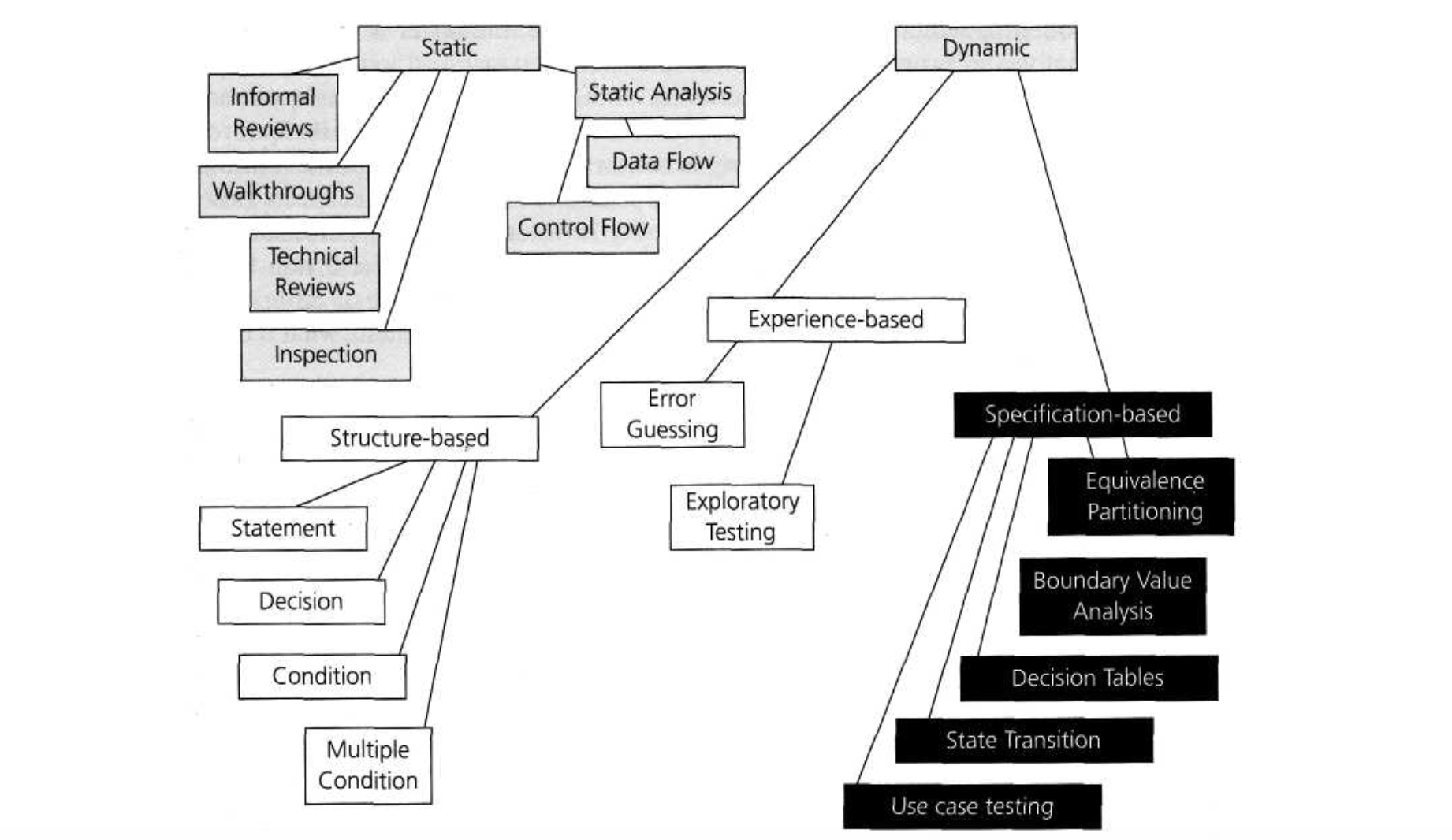Test Techniques

This document provides an overview of testing techniques based on the ISTQB Foundation Level syllabus, covering both Static Testing Techniques and Dynamic Testing Techniques for a comprehensive understanding.
📝 Static Testing Techniques 📜
Static testing involves the examination of work products (e.g., requirements, design documents, code) without executing the code. This approach is key for early defect detection and improving documentation quality.
Static testing helps in identifying defects early, reducing rework costs, and improving the overall quality of the artifacts.
Techniques for Static Testing
-
Reviews
- Informal Reviews: Casual peer reviews of documents.
- Walkthroughs: Meetings where the document's author explains the content for feedback.
- Technical Reviews: More formal sessions involving experts to focus on defect identification.
- Inspections: Highly structured reviews with defined roles, rigorous processes, and checklists.
-
Static Analysis
- Tool-Assisted Analysis: Automated tools check for compliance with coding standards, potential vulnerabilities, or other issues.
- Manual Analysis: Experienced reviewers analyze the artifacts to catch subtle issues that tools might miss.
Benefits of Static Testing:
- Early Defect Detection: Catches defects before the software is executed.
- Cost-Effective: Fixing issues early is generally less expensive.
- Improved Quality: Enhances clarity and completeness of requirements and designs.
🚀 Dynamic Testing Techniques 🛠️
Dynamic testing involves executing the software to verify its behavior and functionality. This testing is performed after the software has been built and is usually categorized into the following types:
1️⃣ Specification-Based (Black-Box) Testing
Focuses on testing the functionality of the system without knowledge of its internal structure.
- Equivalence Partitioning (EP): Divides input data into valid and invalid partitions.
- Boundary Value Analysis (BVA): Focuses on testing the edges of input partitions.
- Decision Table Testing: Uses tables to cover combinations of inputs and their expected outcomes.
- State Transition Testing: Examines the changes in state triggered by various inputs, useful for systems with state-dependent behavior.
- Use Case Testing: Tests the system from an end-user perspective based on real-world scenarios.
2️⃣ Structure-Based (White-Box) Testing
Relies on the internal structure and implementation details of the code.
- Statement Coverage: Ensures every executable line is run at least once.
- Decision (Branch) Coverage: Ensures every decision point (e.g., if-else branches) is executed.
- Condition Coverage: Tests every condition within decision statements for both true and false outcomes.
3️⃣ Experience-Based Testing
Leverages the tester’s experience and intuition to design test cases.
- Exploratory Testing: Involves simultaneous learning, test design, and execution without predefined test cases.
- Error Guessing: Based on experience, testers predict where defects are most likely to occur.
🔄 Integrating Static and Dynamic Testing
Combining static and dynamic testing techniques leads to a robust quality assurance strategy:
- Static Testing:
- Catches defects early in the development cycle.
- Improves documentation quality, reducing ambiguities.
- Dynamic Testing:
- Verifies functionality by executing the software.
- Ensures that the system meets its requirements and behaves as expected under various conditions.
Combined Approach: Employing both static and dynamic testing methods ensures thorough testing coverage, leading to higher software quality and reduced risk of costly defects later in the development cycle.
🏁 Conclusion
A balanced testing strategy that incorporates both static and dynamic testing techniques is key to achieving high-quality software. By detecting issues early and verifying system functionality, organizations can lower costs, enhance reliability, and deliver better products. Happy Testing! 🚀